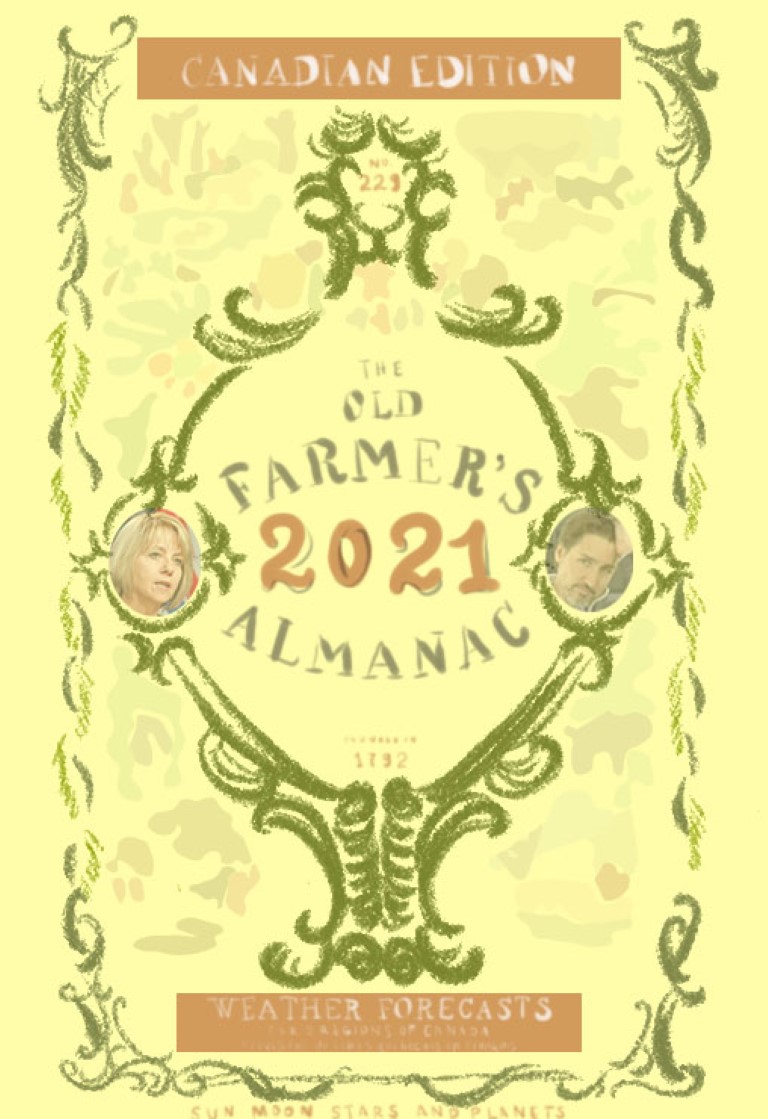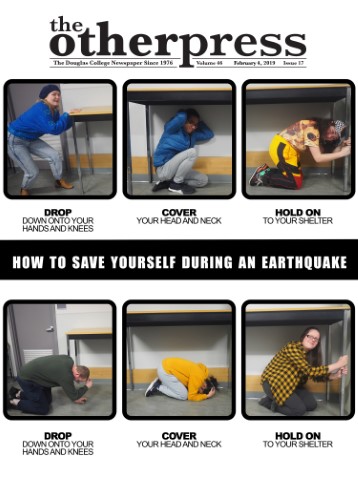
The inaccurate science of meteorology leaves millions of people yearning for more
By Janis McMath, Editor-in-Chief
A study in Kansas City found that when local forecasters predicted a 100 percent chance of rain, it only actually rained roughly 33 percent of the time.
A new year brings many things—including weather predictions from The Farmers’ Almanac and the Old Farmer’s Almanac. The Farmers’ Almanac has nearly 1.3-million followers on Facebook and 1.7-million copies sold annually; the Old Farmer’s Almanac has more than 1.5-million followers and more than 3-million copies sold annually. These books predict long-term weather have a lengthy history in both the US and Canada. Although they have a large following (as far as weather related content goes) the popular Google search “is The Farmers’ Almanac witchcraft?” implies that few know how it works or what it is.
An almanac is a type of book that contains information about the weather, star positions, astrology, jokes, and other entertaining and informative content. The etymology of “almanac” is uncertain, and commonly debated. One of the original almanacs was called Poor Richard’s Almanack and was actually made by Benjamin Franklin. (He actually put the first version of his quote “No pain, no gain” in the publication—known initially as “there are no gains without pain.”) Almanacs were extremely common in the late 16th century, and the only book that outsold them was the bible. The hole in the corner was used to hang the book from a nail in your outhouse—the publishers still put the hole in the corner in continuing the tradition. Both almanacs use the term “farmer” since everyone grew their own crops when almanacs were first gaining popularity. Each of the almanacs predict what the season will look like, and both have been doing so for over 200 years. George Washington, the first president, was still president at the time the book was initially put out. (Donald Trump was the 45th president for reference.) The website for the Old Farmer’s Almanac uses this as a humble brag, but there certainly is some negative association with how dated their formulas and methods are for predicting the weather.
While the almanacs are associated to old wives’ tales (as they publish the superstitions) each of their websites state that they don’t use such information in their predictions. Each weather-predicting service states that they use some old formulas, but have updated many of the factors they consider. The Old Farmer’s Almanac explains that they study sunspots, consistent weather patterns, and the atmosphere for their forecast; The Farmers’ Almanac considers sunspots, tides and the moon, and the positions of planets in their calculations. Many of the factors the almanacs consider range from somewhat consequential to basically irrelevant in the eyes of meteorologists. Tides, the moon, and planetary positions are seen as irrelevant to negligible—but sunspots do have some impact on the weather. National Weather Service meteorologists do point out that such data only impacts weather at the length of years or decades—and cannot help accurately determine the specifics in forecasting the seasons.
As mentioned before, something almanacs did keep from their days from 200 plus years ago are their old formulas and a strange secretive tradition; the Old Farmer’s Almanac literally has the formula their creator made locked up in a black box at headquarters, while The Farmers’ Almanac has had very few people access their formula (only seven in the company’s lengthy existence). The current person who calculates the weather for The Farmers’ Almanac uses a pseudonym, Caleb Weatherbee, to ensure protection of the company’s secrets.
While this move can be partially understood from a fiscal perspective in keeping their business exclusive, as far as the practice of science goes, this secretive approach at best discredits their method and, at worst, can be seen as fraudulent. A method which is claimed to be 80 percent accurate in predicting the weather should be shared with the public. Good science is reproduced and peer reviewed. And, if others can have access to the formula, they can add their own contributions to refine the method.
The almanacs state that they are 80 percent accurate, but multiple studies all put their guesses closer to the neighbourhood of 50. As the study “Testing the Farmer’s Almanac” suggests, this percentage of accuracy is no greater than chance. The accuracy of the almanac’s predictions is further confused by the vague language used. While they explain how to read the almanac on their website, it is observed that language like “greater than usual” and “less than usual” allows the almanac to claim accuracy when they are just stating the usual averages and leaning on the law of averages. For example, the term “greater than usual snow” is used in the almanacs. How much greater? Another criticism is that historic averages can’t help when the weather is abnormal. It is mentioned that meteorology used to be all about looking at historic averages, so the almanac does share that method with historic meteorology—but the almanac cannot predict day-to-day changes with their method.
Meteorologists emphasize that any weather prediction past a week is unreliable, and that even day-to-day forecasts are, at this point in science, seen as impossible to master. Because there are a mind-boggling number of variables in predicting weather, forecasts are all about the amount of power behind the huge calculations needing completion. With the help of supercomputers, meteorologists are able to input these millions of variables without needing the manpower of thousands upon thousands of people to complete these equations. The availability of accurate and constantly updated weather data is what has pushed meteorology forward, so the almanacs making accurate far-reaching predictions without considering any of this revolutionary data seems unlikely.
It is said that if every molecule in the system were monitored, we would be able to predict the exact weather, but as that is impossible (at this point in human history anyway), all weather readings are guaranteed to be inexact educated guesses. This where the “Butterfly Effect” comes into place—a theory first postulated by meteorologist Edward Lorenz in the 1960s. The theory basically explains that with a system as complex and as filled with variables as the weather, small changes in one aspect have the power to create big changes in the final forecast of the weather. His theory was also known as “chaos theory.”
Instances where forecasters have been drastically off the mark after being so confident understandably contribute to the negative impression many have of meteorologists—and perhaps is why more than a million people look to the two popular farmer almanacs for alternative weather forecasts. For an example of the failings of forecasters, a 19-year-old boy named Jacob Meisel made his own app that predicted the floods due to Superstorm Sandy much more accurately than the local weather program. A study in Kansas City found that when local forecasters predicted a 100 percent chance of rain, it only actually rained roughly 33 percent of the time. These examples certainly don’t build up the image of the weatherman. It is understandable where the confusion and contempt comes from, but there have been many successes in metrology. Hurricane and flood prediction is one huge advancement to consider. Another factor to consider is that information used to predict the weather isn’t available to every network and station. Less populated areas have less technology to predict the weather.
Knowing that meteorology is still a new and developing science with little accuracy is essential when trying not to drown in the plethora of weather reports coming at you. We can’t completely discount the credibility of the almanacs without reviewing their methods—but if they bar the public from reviewing their methods, the secrecy is certainly reason for suspicion. It is no question that their methods are out of place in the field of science. Meteorology, while a changing and improving science, is still very fetal in its methods and theories. Strides in weather forecasting are on the horizon, but until then, we’ll have to appreciate the technology we have now and learn to live in the uncertainty of weather. And without the uncertainty of weather, where would small talk be?


